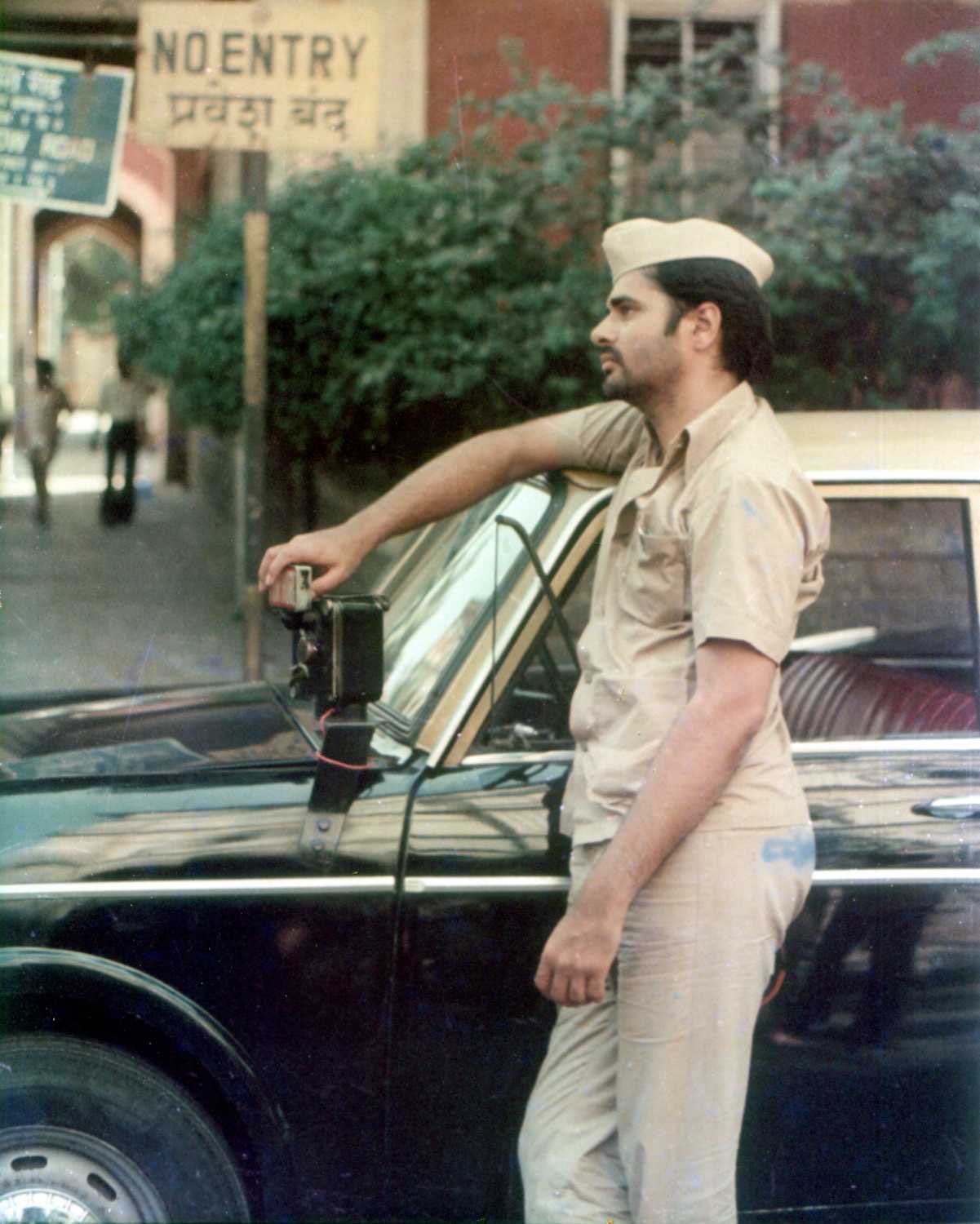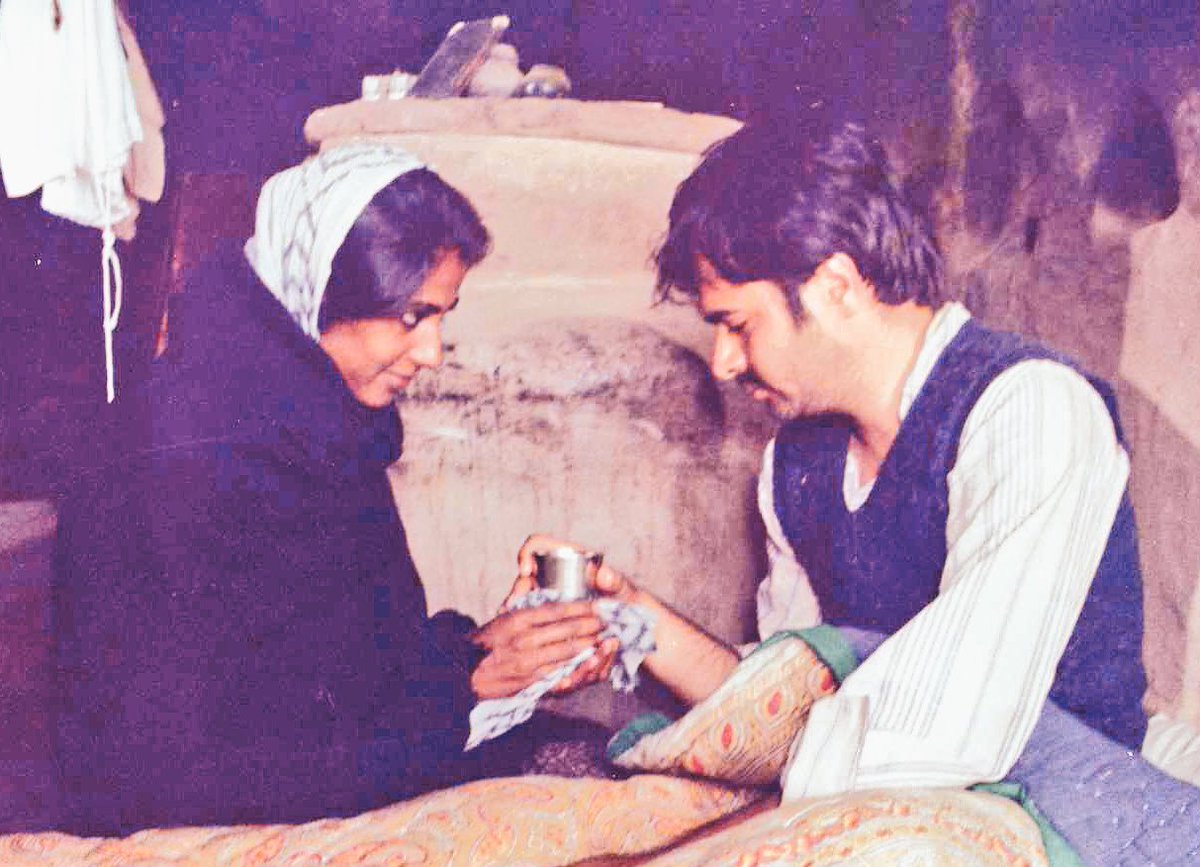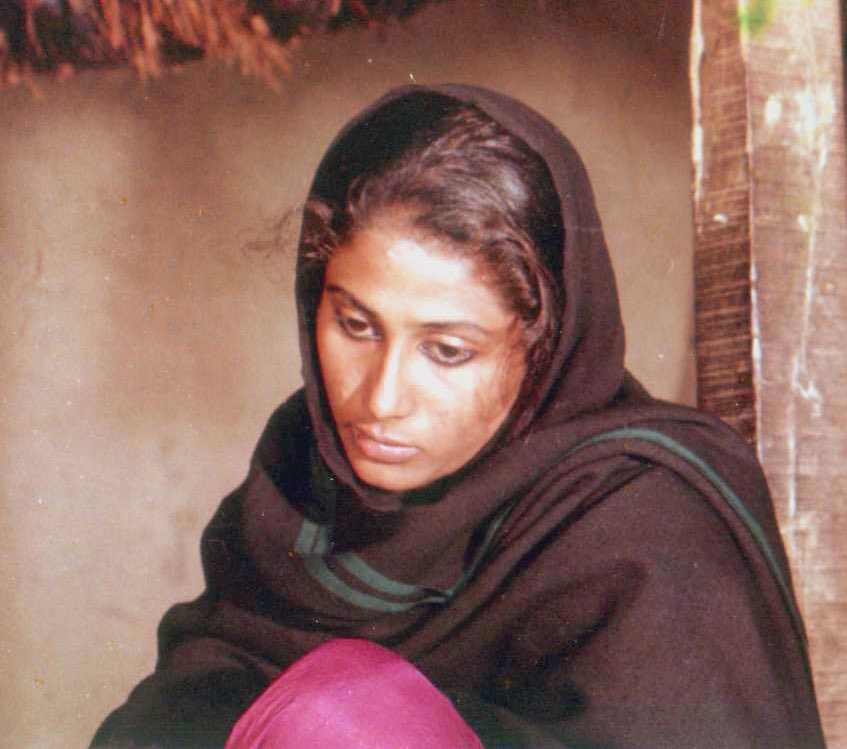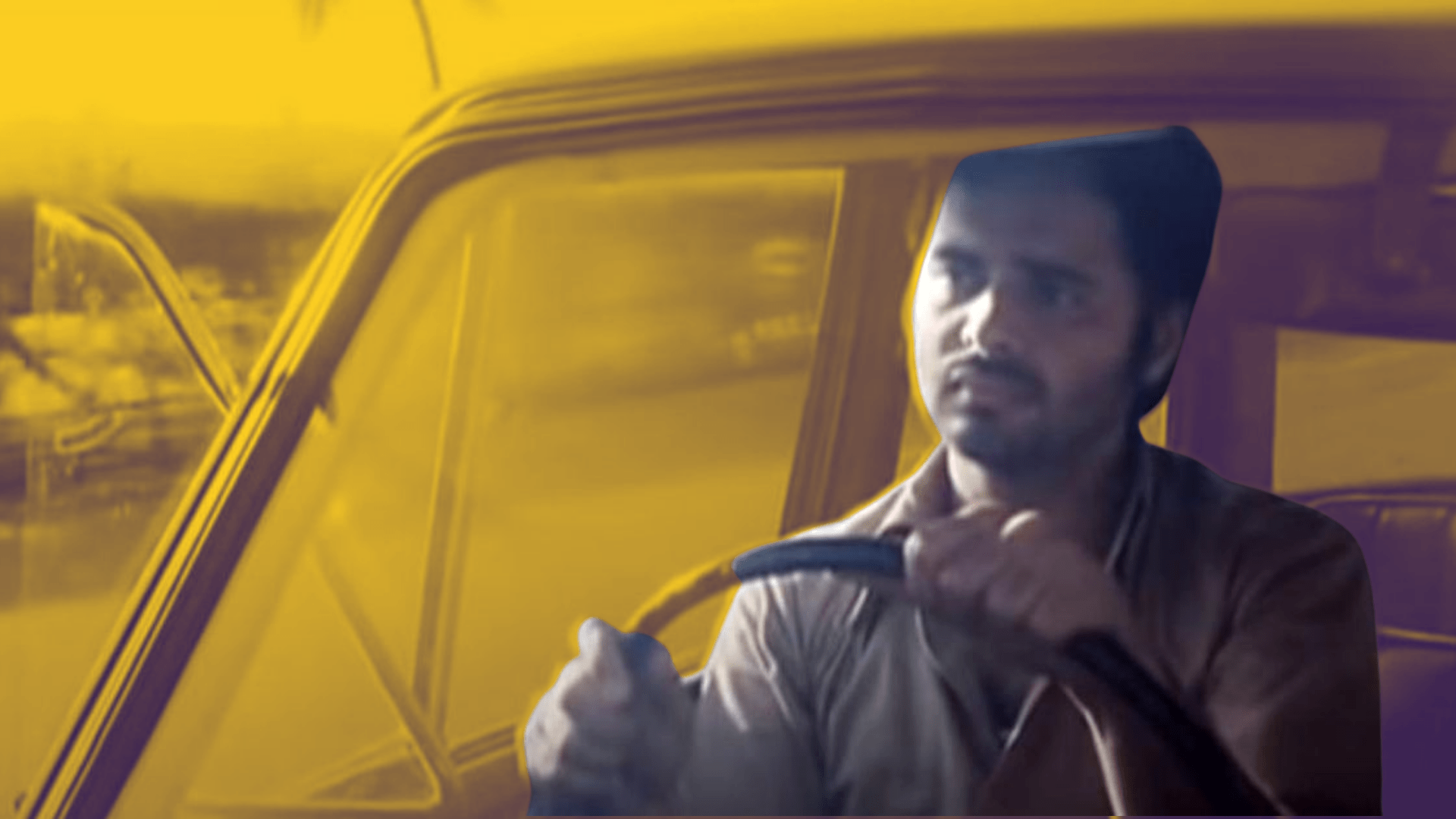In Gaman, as Kotwara’s Ghulam Hassan (Farooq Sheikh) is taken on a tour through the city of Bombay by his childhood friend Lallulal Tiwari (Jalal Agha), they drive past VT station and its spiky outward opulence precariously held in place by columns of scaffolding. Ghulam is visibly awed and remarks: “Baahir se bohut jabardast dikhayi det hai!” (Looks grand from the outside!) Lallulal, a trained Bambaiya migrant by then who is in the know, jovially comments: “Yehi shaan hai iss shehar ki, baahir se sab cheez aala dikhayi det hai” (That is the very pride of this city, everything looks glamorous from the outside), to which Ghulam adds- “Aur andar sab jhol-jhal!”(And all muddled on the inside!) The friends laugh and carry on.
Muzaffar Ali’s directorial debut Gaman is an incisive depiction of a migrant in the city of Mumbai. The underbelly of the city, the slums and the jhopadpattis, emerge as the hearth and primary setting for the movie while the migrant is afforded only an outsider’s view to lavish estates and libraries, its wine-drinking and kaala-ghoda-owning crowd. Ghulam is initially disconcerted by the sheer speed of the city: a rush of faces greets him everywhere in stark contrast to the leisurely vacancy of his life in a village in Uttar Pradesh. Despite never really finding himself at home in Mumbai, he learns to fare through the breakneck speed of the city. After they have been cheated off their land by the local zamindar, Ghulam’s family depends on his stint in Mumbai for survival; falling by the wayside is a risk he cannot hazard. He takes lessons on how to drive a taxi and finds himself a place to live.
Muzaffar Ali’s directorial debut Gaman is an incisive depiction of a migrant in the city of Mumbai. The underbelly of the city, the slums and the jhopadpattis, emerge as the hearth and primary setting for the movie while the migrant is afforded only an outsider’s view to lavish estates and libraries, its wine-drinking and kaala-ghoda-owning crowd
Also read: Migrant Women Workers On The Road: Largely Invisible And Already Forgotten

Ghulam meets Ramprasad, another migrant from Kotwara, who is his father’s peer and has driven a taxi in the city for over thirty-five years. In his character, Muzaffar Ali contrasts Ghulam’s green, young steps making forays into the promising land of a cosmopolitan space. Ramprasad bears no romanticism towards the city and dies an unassuming death in a road accident. He is referred to as ‘4143’- the number of the taxi he drives, fading into namelessness in a city teeming with millions like him. The city is unmoved making Ghulam wonders at its harsh competence. Hariharan’s “Ajeeb Saneha Mujh Par Guzar Gaya Yaro…” plays in the background as the lines ask- “Woh Kaun Tha, Kahan Ka Tha, Kya Hua Tha Usse? Suna Hai Aaj Koi Marr Gaya Yaaron.” The screen is littered with faces of the many taxi drivers of Mumbai- each distinct but granted only seconds of the viewer’s attention.

Today, this inevitable brings to mind the many deaths of migrant workers in India, when an ill-planned nation-wide lockdown compelled crores to attempt walking back to their native villages from metro cities across the country. For those who died during the perilous journey back, the distance between the cities and their native villages remained insurmountable. The government glibly responded that there was no data available on the deaths of migrant workers. They were crushed under cargo trains, died of road accidents, were packed up in Shramik trains and trucks as the government philosophised on ‘2 Gaj Ki Doori’ and issued advisories on social distancing. That these lives deserved no documentation- not even in their deaths, was made amply clear.
this inevitable brings to mind the many deaths of migrant workers in India, when an ill-planned nation-wide lockdown compelled crores to attempt walking back to their native villages from metro cities across the country. For those who died during the perilous journey back, the distance between the cities and their native villages remained insurmountable.
The government instructed the migrant workers to stay where they were, without making the cities any hospitable for the thousands who were stripped off their livelihoods and daily wages in the face of the pandemic. The cities which they ran but never owned were ready to turn a blind eye towards their plight, loudly proclaiming that these lives were but expendable. This pull towards their native villages was not some pouty wish on the part of the workers, but was orchestrated by the callousness of the government and a complete breakdown of structures and institutes put in place for welfare. In Gaman, Farooq Sheikh’s character is confronted by this continuing indifference and feels alienated, pining for a sense of belonging. He listlessly fears obscurity, knowing well that the fate of Ramprasad is far too common in the city. As Ghulam tries to rally money to send home for the treatment of his ailing mother, when asked, “Koi khaas baat hai kya?” he simply replies, “Nahi”- his predicament is neither special nor uncommon.
Gaman, despite its themes of alienation, allows for spaces of solidarity. Solidarities are forged amongst all those who toil, traversing differences in backgrounds. All with empty stomachs and empty pockets, regardless of their ‘Bhaiya’s or their ‘Bhau’s, try and grapple with the city in order to survive it. When the Municipal Corporation issues a notice saying that the jhopadpatti where Lallu resides has been built illegally on government land, and that it is to be cleared within fifteen days, the authorities remain unconcerned about ethnic differences. Those who are propelled to construct rickety homes beyond the ambit of reductive legalities, sweepingly fall under the purview of the Corporation’s order. The theme of affording a home in the city bares to the viewer the sheer economic disparity which laces the glitzy cosmopolitan city even today. Gaman poignantly traces the relationship between Lallu from UP and Yashodhra (Gita Siddharth) from Ratnagiri who are in love with each other but do not yet have the means to marry. Theirs is an unlawful desire, encumbered not merely by divisive politics but also by the lack of money which precludes their hopes.
The movie is named “Gaman” which translates to “departure”, and significantly so. While it portrays both the departure from and the arrival to, lost homelands and their persistence emerge as one of the most eloquent threads in the movie. The arrival never really leads to assimilation- the migrant’s foreignness is sustained through exclusionary systems. Ghulam’s wife, Khairun (Smita Patil) and her letters weave into the narrative the voices of all those who are left behind at the other end of the act of migration. Chhaya Ganguli’s rendition of “Aap Ki Yaad Aati Rahi Raat Bhar” in Gaman portrays the longing for an embrace, voicing the thousands of women who bemoan their immobility beyond the sphere of the domestic.
Also read: COVID-19 In India: The Shunned & The Forgotten Migrant Workers

Male-out migration dictates that the configurations of the familial structures are preserved by women. Surinder Jetley in an article titled “Impact of Male Migration on Rural Females” for Economic and Political Weekly (1987) writes of the “prolonged displacement of family life, emotional deprivation and insecure future” which male-out migration pushed women towards. Social and spacial boundaries are relatively more stringent for women as they are deemed the preservers of local roots, eking out a living through money which is to be made only in the city. In Gaman, Khairun, though a stabilising centre within a context of forced economic migration, is set against the unsettling flux of endless waiting. The symbolics of movement and inertia are important tropes which mark Gaman where images of taxis, trains, buses, planes abound.

The movie ends with a train leaving a station: the train which was to take Ghulam back home. Despite all the means of transportation which promised the world as a global village, the distance between the city and the village remains unassailable for Ghulam. Nearly all of his savings will be spent on the journey to and fro: what then? The train slowly crawls out of the platform, bearing witness to the vastness of disparities in the country. As Ghulam stays caught up in Mumbai, other migrants refuse to return to the cities that forsook them this pandemic.
The city and its keepers creakily carry on. For how long?
Dipanjali Singh is currently pursuing her Master’s degree in English at the University of Delhi.




